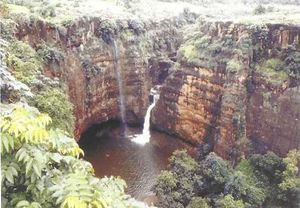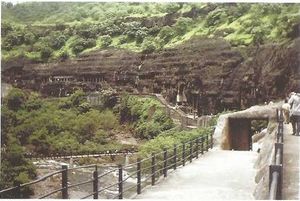Ajantā
By Swami Harshananda
Celebrated for its cave-paintings, Ajantā is actually a range of hills in the Ahmednagar district of Maharashtra State. It was originally known as Ājīntha.
The caves are situated at a distance of 6.5 kms. (4 miles) from the village Fardapur, which itself is 101 kms. (63 miles) from Aurangabad, the district head-quarters They are excavated in the semicircular scarp of a steep rock, about 76 metres (250 ft.) high overlooking a narrow sinuous gorge, through which flows a stream called Waghora, descending at the head of a ravine as a waterfall.
There are 30 caves in all including the unfinished ones. They were carved out between 2nd century A.C. and 7th century A.D. Some of them contain dated inscriptions. The caves were probably excavated for the use of the Buddhist (Hīnayāna) monks for their retreat in the rainy season.
Some of them are caityas whereas the others are vihāras (monasteries). A remarkable feature of these caves is the paintings on their frescoes. They depict the various episodes of Buddha’s life and few aspects of the contemporary social life. The 16th, 17th and the 19th caves contain some remarkable paintings. The caves contain charming sculptural decorations also.
References[edit]
- The Concise Encyclopedia of Hinduism, Swami Harshananda, Ram Krishna Math, Bangalore



